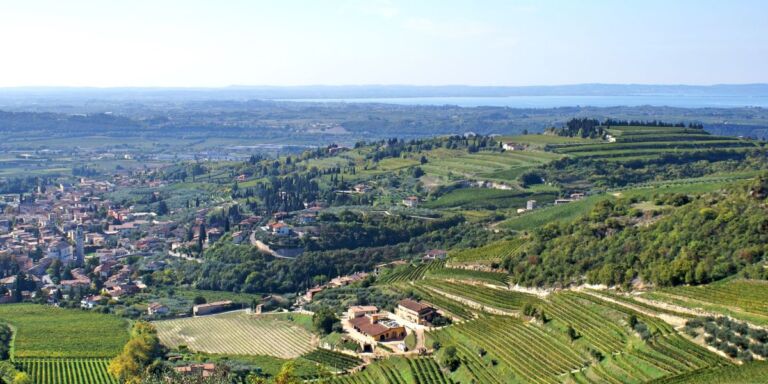‘This is a Japanese wineberry,’ says Tommy Banks, cradling a particularly thorny bush hung with ruby-hued soft fruit. The Michelin-starred chef from North Yorkshire is taking me around his three-acre kitchen garden adjacent to his flagship restaurant, The Black Swan. We’re meeting a few weeks after the opening of his latest venture, The Abbey Inn, a restored historic 19th-century inn transformed into a country pub with rooms overlooking Byland Abbey. ‘We’ve built terraces to make everything look a bit more Provence,’ he explains, as we wander past the apple and pear orchard to a polytunnel stuffed with lemon verbena. The smell is intoxicating – think lemon sherbets. ‘It’s my favourite herb,’ he reveals. ‘I use it for everything from desserts to brining – I even make a pale ale with it.’
The flavour of vegetables, herbs and fruit is at its best within the first 30 minutes of being picked, so the quicker it hits the plate, the better
Right on cue, a chef in his whites wanders by, trug in hand, in search of lovage and marigold flowers for the menu that night. ‘I prefer the marigolds to be harvested when the sun has been on them all day and the bees have taken their pollen – they are so much more flavoursome then. It’s these little things that make the difference,’ says Banks. Diners also like to wander the raised beds and regimented rows, aperitif in hand. ‘A kitchen garden is great for us to be able to grow all the weird and wonderful things we can’t buy elsewhere but it’s also nice for guests to walk around and see all the things on the menu,’ reasons Banks. And he’s not wrong. It’s not just Michelin stars that chefs are chasing these days but a well-stocked, immaculately maintained kitchen garden that emphasises the link between field and fork.

Banks is among a rising number of chefs who have embraced the kitchen garden. Once the preserve of luxury manor house hotels (Raymond Blanc’s Le Manoir is arguably the most famous example), where traditional potagers that once fed upper-class families are revived to feed guests with an ever-increasing array of obscure vegetable varieties and micro herbs, now more humble establishments are trying it too.
The perceived wisdom is that the flavour of vegetables, herbs and fruit is at its best within the first 30 minutes of being picked, so the quicker it hits the plate, the better. In short, if you want optimum freshness, then a kitchen garden on your doorstep is the way to go. Creating one is not cheap, given the costs of plants, seeds and labour but it’s a key selling point for a restaurant– who doesn’t love to see the ingredients on their plate growing outside the window, particularly at a time of increased interest in food provenance? And anyone with access to a patch of dirt can grow their own – even if it’s just to become self-sufficient in herbs.

Banks, though, offers much more than just the kitchen garden, as there’s a 160-acre farm alongside it too – his family’s farm for many generations, which now uses a regenerative farming model (helping him bag a green Michelin star). The Banks family recently brought back livestock to the farm, including grass-fed Dexter cattle, Herdwick sheep, rare breed pigs and hens, and there’s a further 35 acres of vegetables, which supply all three restaurants.

‘People who follow our story want to come here and eat because of it. Cheap food comes with a consequence, whether environmental, human, animal or all three,’ says Banks. ‘Whenever you do anything like this it’s clearly way more expensive but people want to be a part of it and it’s impossible to put a value on that. It’s a way of life and if you look at it like that then it makes more sense. It’s not about your GP [gross profit], it’s about telling a story and I’m viciously proud of that. I think it’s the future.’
Five more great restaurants with kitchen gardens

Pythouse Kitchen Garden
West Hatch, Wiltshire
Sitting in glorious Wiltshire countryside within a perfectly preserved 18th-century walled garden, Pythouse Kitchen Garden is the brainchild of restaurateur Piers Milburn and head chef Darren Broom. Successful execution of the concept is also down to head gardener Annie Shutt, who manages the almost endless list of varieties grown, many of them visible from your table in the restaurant. The menu makes the most of the produce, with dishes such as charcoal roasted courgettes with citrus yoghurt and caramelised honey, and haunch of wild North Somerset venison with roasted carrots and pickled gooseberries. The garden is sufficiently productive that Pythouse even has its own non-alcoholic drinks brand, Sprigster Drinks, that uses ingredients grown on the property. pythousekitchengarden.co.uk

The Pig in the South Downs
Madehurst, West Sussex
‘The kitchen garden is rooted deep within the Pig Hotels’ DNA,’ declares hotel director Mairead Gleeson. The Pig in the South Downs, which opened in 2021, has one of the biggest kitchen gardens in the group, at nearly two acres, along with 4,000 vines of Chardonnay, Pinot Noir, and Pinot Meunier in the neighbouring vineyard, which will be bottled for the first time later this year. ‘It creates a connection between our guests and our food,’ continues Gleeson, who says that guests are encouraged to chat to the garden team. thepighotel.com

Padstow Kitchen Garden
Padstow, Cornwall
With views over the Camel Valley, seventh-generation farmer and former Rick Stein head chef Ross Geach (pictured) has developed an idyllic enterprise in the form of Padstow Kitchen Garden. He offers monthly field-to-fork dining events, cookery courses and fresh produce, from baby leeks and kale to edible flowers, which will likely turn up on your plate at one of his garden feasts, which start at £45. A typical menu might start with pan con tomate, followed by whole suckling pig (he keeps Cornish pedigree large blacks) with patatas bravas, broccoli, courgettes, and mojo verde, finishing with Basque cheesecake. padstowkitchengarden.co.uk

Updown Farmhouse
Deal, Kent
The rambling 17th century Grade II-listed farmhouse near Deal is making waves not just for its robust flavours and chic interiors but for a new kitchen garden too. ‘Updown was originally a working farm so it’s nice to have our own little agricultural corner,’ explains co-owner Ruth Leigh, who talks of the joy she derives in digging up potatoes and taking them straight to the kitchen. ‘And we have tomatoes growing just a metre from the pass,’ she adds, walking along the herb-edged path that connects the restaurant and the house. updownfarmhouse.com

L’Enclume
Cartmel, Cumbria
Simon Rogan’s groundbreaking restaurant in the southern Lake District regularly makes headlines, be it for last year’s third Michelin star, achieved after 20 years in business, or its impressive sustainability measures. His latest offering is a one-of-a-kind tour of ‘Our Farm’, less than a mile from Cartmel, which has tripled in size since it was created in 2011 to supply produce to Rogan’s restaurants. Led by head farmer John Rowland and Our Farm head chef Liam Fitzpatrick, the tour culminates in an alfresco lunch amongst the polytunnels and growing beds, with dishes such as grilled turnip with bacon fat and roasted garlic, and salt-baked kohlrabi dressed in spinach butter. lenclume.co.uk








